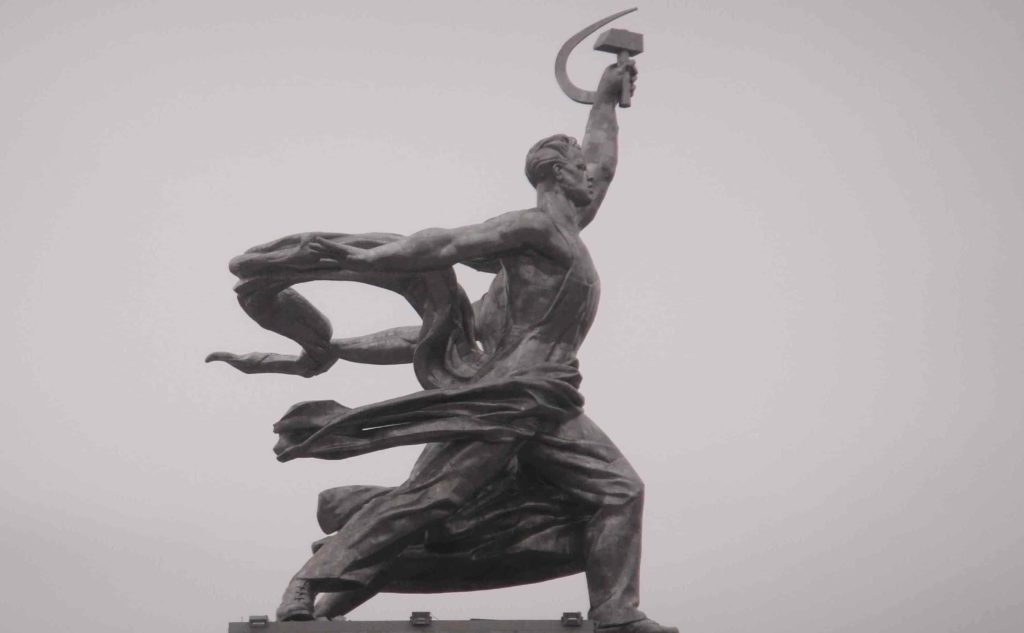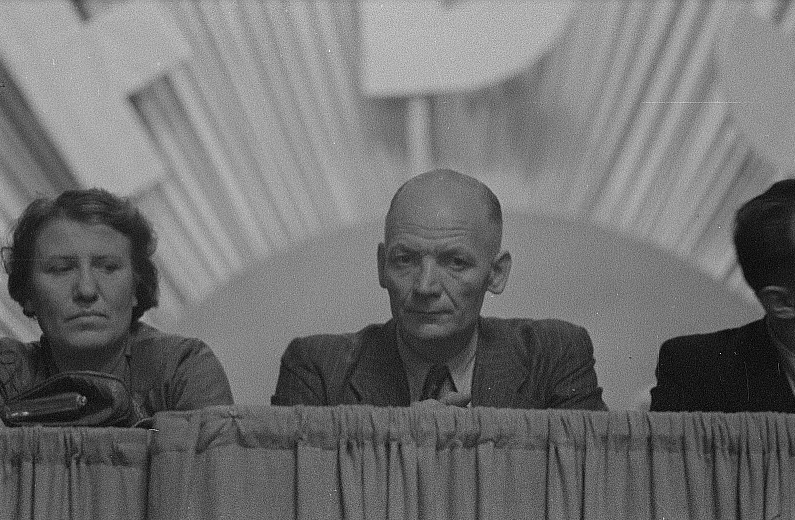Fischli and Weiss as DIY
I have been a fan of Fischli and Weiss since I first saw works by the Swiss artist duo in the late 1980s. I was immediately struck by the playful philosophical wit of their work. It’s not the kind of art you need to study for a long time. If not at first glance, it reveals itself or not, in the second glance.
For example, their installation “The Table” (1992/93), containing seemingly randomly arranged everyday objects on a large table, such as buckets, cleaning agents, brushes, full ashtrays, paint cans, and so on. At first glance I first thought it was a bad joke, upon seeing “The Table” in the old Kunsthalle Wien (the “Krischanitz container”). How could one continue to exhibit ready-mades four generations after Marcel Duchamp by simply dumping the rubbish of one’s own studio on a table? After a tip-off from my more art-savvy companion and a second glance, it became clear: these aren’t “real” objects at all, but meticulously hand-reconstructed and painted objects made of polyurethane. How ingenious is that! What better way to question industrial production methods and consumer society than with such outstanding craftsmanship, attention to detail and artistic sensibility.
Their film “The Way Things Go”, premiered at the Documenta 8 in Kassel, is just as shrewd. It was the first art film that I found as philosophical as exciting, and entertaining. Even though it remains to be discovered whether it appeals primarily to the philosopher, the tinkerer or the child in me.
The short film shows a literal domino effect, with the individual tiles composed of a string of improvised-looking devices made of boards, ladders, car tyres, plastic bottles, fireworks, balloons and the like. The camera then follows the chain reaction in which different physical and chemical principles are used to move the next tile: it falls, rolls, bursts, swings, foams, burns, and smokes. Things take their course and one can’t help to ponder while watching, “Is it going to work?” and reflect on this, “Can life be summed up that way?”
Last year, the young Youtuber Creezy posted a simpler but equally entertaining video that immediately made me think of Fischli and Weiss. From various objects that might have accumulated in any household with a garden, he built a variant of a Rube Goldberg machine, filmed in motion in one take — just like Fischli and Weiss. Compared to the contemplative original, however, indicators of today become obvious: the video is shorter, more dynamic, limited in physical options, and just for clicks (over 4 million). There was no time for reflection and it did not initiate any either. And yet: it is a culmination of a DIY culture and an interesting antithesis to contemporary art.
Both works required outstanding creativity, meticulous craftsmanship as well as professionalism. At the same time, in their denial of any practical use, indeed complicating the task, they became a provocation to the demands that both modern technology and traditional craftsmanship place on their instrumentality. As Heidegger would say both cases deal with “techne”, that is, with craftsmanship and skill as well as with high art and the fine arts: “The techne belongs to bringing-forth, to poiesis. It is something poietic.” (Heidegger, 1962, p. 11). It goes on to say: “The word techne goes […] together with the word episteme. Both words are names for cognition in the broadest sense. They mean the knowing of something, the understanding of something.” (ibid.) In the case of Creezy, is it now also art or simply a gimmick?
Referenzen:
Heidegger, Martin (1991). Die Technik und die Kehre: Günther Neske Pfullingen.
Goldmann, R. (2006). Peter Fischli David Weiss. Ausflüge, Arbeiten, Ausstellungen. Ein offener Index. Köln: Verlag der Buchhandlung Walther König.
Trailer, 'The Way Things Go',1987, Filmstill“, Fischli and Weiss, 1987, 3min
The Swish Machine, Creezy, 2020, 3min
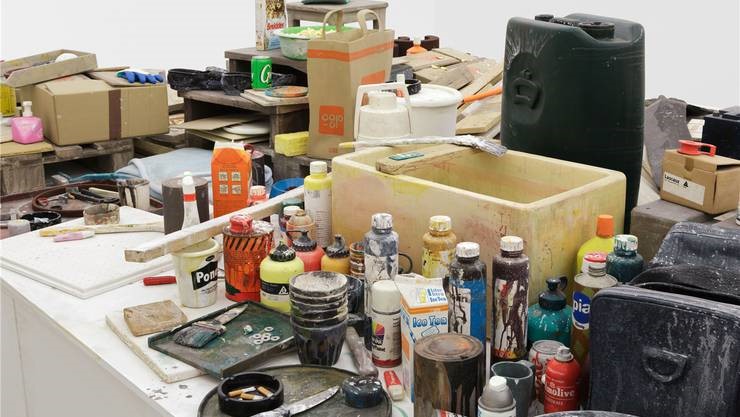
The Table, 1992/93, Fischli and Weiss, Table with around 750 Objects made of Polyurethane
© Fischli and Weiss
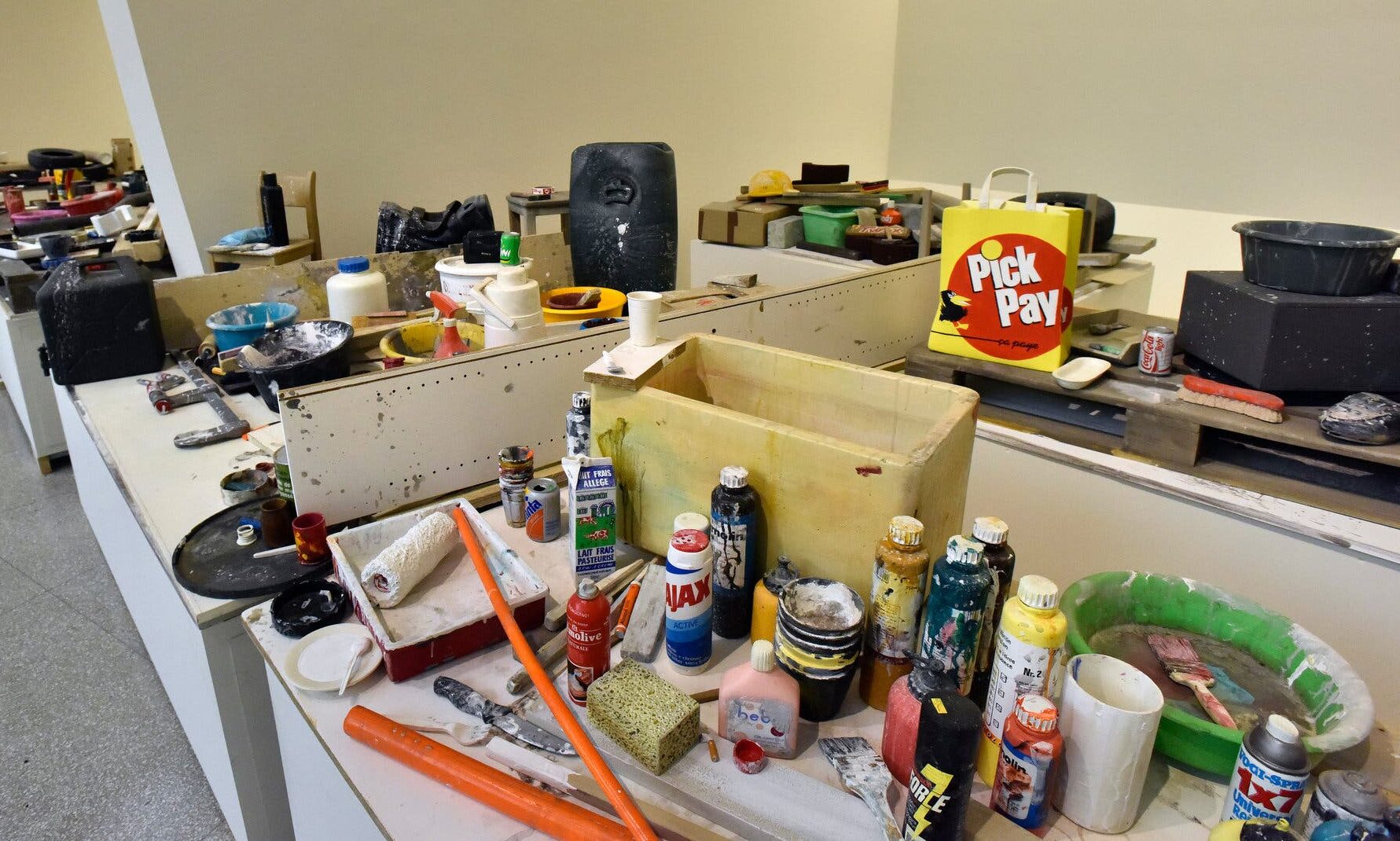
Fischli and Weiss’s “Untitled” (1994-2013)
© Philip Greenberg for The New York Times

Objects which Cree Ossner (“Creezy“) used for his "Swish Machine",
© Cree Ossner
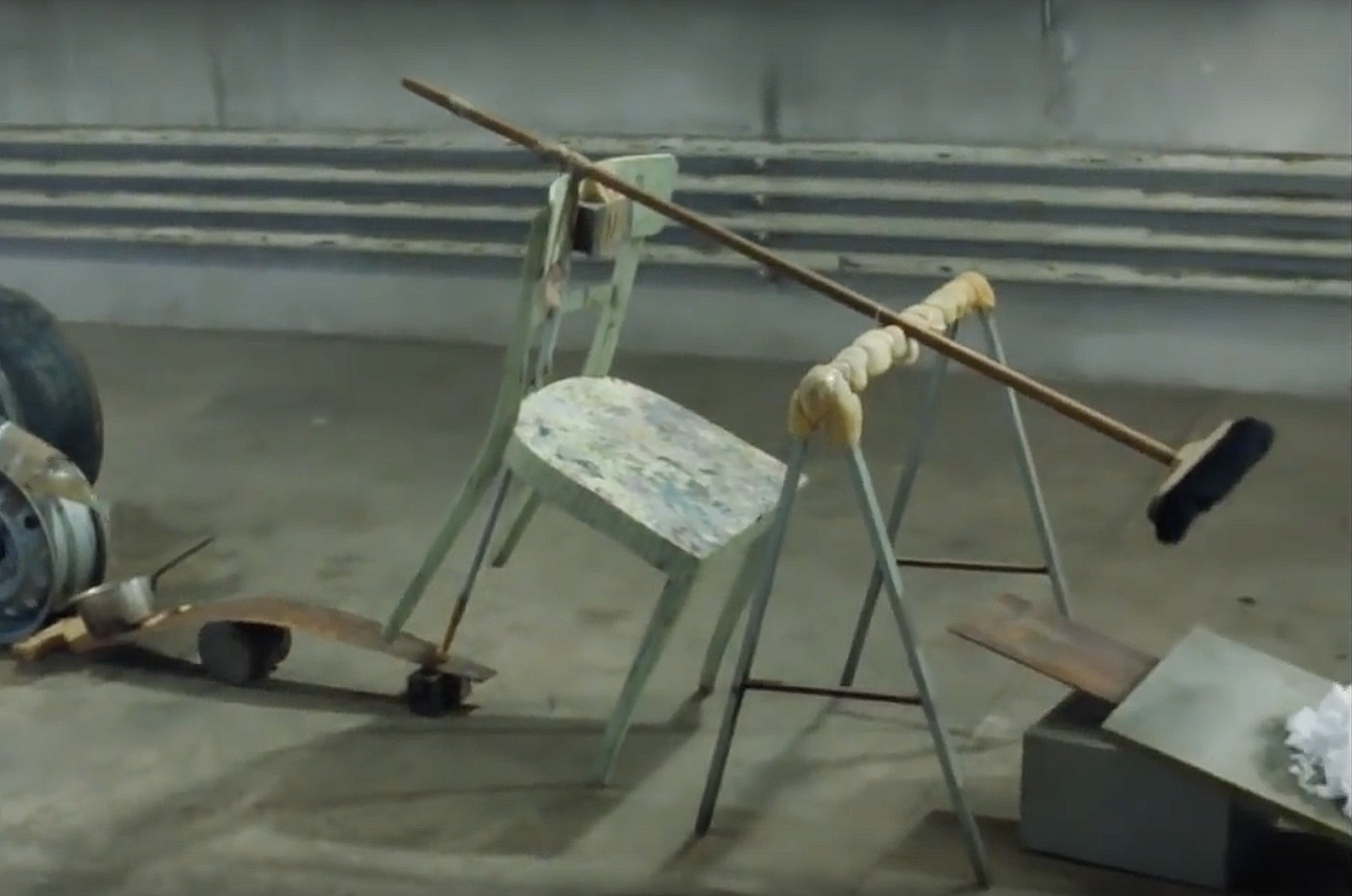
The Way Things Go,1987, Filmstill
© Fischli und Weiss

The Way Things Go,1987, Filmstill
© Fischli and Weiss
Fischli and Weiss as DIY
I have been a fan of Fischli and Weiss since I first saw works by the Swiss artist duo in the late 1980s. I was immediately struck by the playful philosophical wit of their work. It’s not the kind of art you need to study for a long time. If not at first glance, it reveals itself or not, in the second glance.
For example, their installation “The Table” (1992/93), containing seemingly randomly arranged everyday objects on a large table, such as buckets, cleaning agents, brushes, full ashtrays, paint cans, and so on. At first glance I first thought it was a bad joke, upon seeing “The Table” in the old Kunsthalle Wien (the “Krischanitz container”). How could one continue to exhibit ready-mades four generations after Marcel Duchamp by simply dumping the rubbish of one’s own studio on a table? After a tip-off from my more art-savvy companion and a second glance, it became clear: these aren’t “real” objects at all, but meticulously hand-reconstructed and painted objects made of polyurethane. How ingenious is that! What better way to question industrial production methods and consumer society than with such outstanding craftsmanship, attention to detail and artistic sensibility.
Their film “The Way Things Go”, premiered at the Documenta 8 in Kassel, is just as shrewd. It was the first art film that I found as philosophical as exciting, and entertaining. Even though it remains to be discovered whether it appeals primarily to the philosopher, the tinkerer or the child in me.
The short film shows a literal domino effect, with the individual tiles composed of a string of improvised-looking devices made of boards, ladders, car tyres, plastic bottles, fireworks, balloons and the like. The camera then follows the chain reaction in which different physical and chemical principles are used to move the next tile: it falls, rolls, bursts, swings, foams, burns, and smokes. Things take their course and one can’t help to ponder while watching, “Is it going to work?” and reflect on this, “Can life be summed up that way?”
Last year, the young Youtuber Creezy posted a simpler but equally entertaining video that immediately made me think of Fischli and Weiss. From various objects that might have accumulated in any household with a garden, he built a variant of a Rube Goldberg machine, filmed in motion in one take — just like Fischli and Weiss. Compared to the contemplative original, however, indicators of today become obvious: the video is shorter, more dynamic, limited in physical options, and just for clicks (over 4 million). There was no time for reflection and it did not initiate any either. And yet: it is a culmination of a DIY culture and an interesting antithesis to contemporary art.
Both works required outstanding creativity, meticulous craftsmanship as well as professionalism. At the same time, in their denial of any practical use, indeed complicating the task, they became a provocation to the demands that both modern technology and traditional craftsmanship place on their instrumentality. As Heidegger would say both cases deal with “techne”, that is, with craftsmanship and skill as well as with high art and the fine arts: “The techne belongs to bringing-forth, to poiesis. It is something poietic.” (Heidegger, 1962, p. 11). It goes on to say: “The word techne goes […] together with the word episteme. Both words are names for cognition in the broadest sense. They mean the knowing of something, the understanding of something.” (ibid.) In the case of Creezy, is it now also art or simply a gimmick?
Referenzen:
Heidegger, Martin (1991). Die Technik und die Kehre: Günther Neske Pfullingen.
Goldmann, R. (2006). Peter Fischli David Weiss. Ausflüge, Arbeiten, Ausstellungen. Ein offener Index. Köln: Verlag der Buchhandlung Walther König.
Trailer, 'The Way Things Go',1987, Filmstill“, Fischli and Weiss, 1987, 3min
The Swish Machine, Creezy, 2020, 3min

The Table, 1992/93, Fischli and Weiss, Table with around 750 Objects made of Polyurethane
© Fischli and Weiss

Fischli and Weiss’s “Untitled” (1994-2013)
© Philip Greenberg for The New York Times

Objects which Cree Ossner (“Creezy“) used for his "Swish Machine",
© Cree Ossner

The Way Things Go,1987, Filmstill
© Fischli und Weiss

The Way Things Go,1987, Filmstill
© Fischli and Weiss

Fitness to work?
Under the topos ‘health’, a comprehensive optimization and enhancement logic is implanted into people. Fitness is one of several influencing factors in establishing innovative, exceptional and performative entrepreneur of oneself.
Erwin and Elvira, the butcher
Fassbinder's outstanding melodrama "In a Year of 13 Moons" (1978) is a consistently topical contribution to today's identity politics debate and a forceful exclamation mark for anti-stereotypical professions.
The old fear of the end of new work itself
We all look forward to the end of the working day, but not the end of work itself. The fear of automation and the end of work is an old topos, as evidenced by industrial films from the 1950s.
Superpowers on the job
What to do with superhuman abilities on the job? Superheroes don't give much information on this. A troll in one of the most extraordinary Swedish films of recent years (Border, 2018), on the other hand does.
When pictures of economy went into motion
A new book introduces us to the important epistemologist Michael Polanyi as a didactician of economics and recalls his educational film "Unemployment and Money" (1940), which is still worth seeing today.
Adolf Hennecke — Hero of the Battle of Production
Where labour and the heroic merge: the glorification of labour in real socialism.

About this blog
By selecting a film or an image, this blog literally illustrates the vast sphere of work, employment & education in an open collection of academic, artistic and also anecdotal findings.
About us
Konrad Wakolbinger makes documentary films about work and life. Jörg Markowitsch does research on education and work. They are both based in Vienna. Information on guest authors can be found in their corresponding articles.
More about
Interested in more? Find recommendations on relevant festivals, film collections and literature here.
About this blog
With picking a film or an image, this blog literally illustrates the vast sphere of work, employment & education in an open collection of academic, artistic and also anecdotal findings.
About us
Konrad Wakolbinger makes documentary films about work and life. Jörg Markowitsch does research on education and work. We both work in Vienna. Information on guest authors can be found in their respective articles.
More about
Interested in more? Find recommendations on relevant festivals, film collections and literature here.


